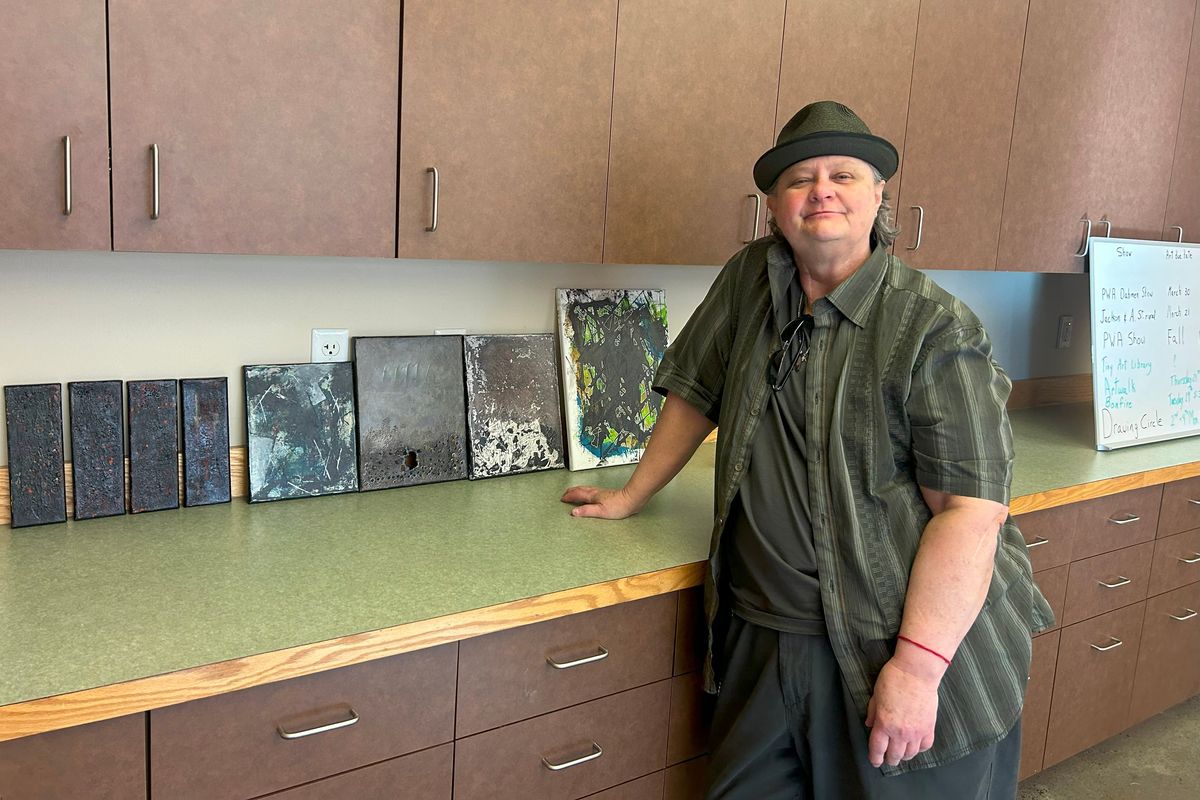Meet the female collective on the Palouse’s art scene

When the Women’s Caucus for Art missed them, about a dozen female artists in the Moscow, Idaho, area took matters into their own hands.
The women decided to dissolve their local chapter of the national organization and form their own collective instead. Now the Palouse Women Artists, the collective has about 50 members of all artistic backgrounds and skill levels from Eastern Washington and Western Idaho.
“Palouse Women Artists is founded on the premise that we’re all artists,” member Gerri Sayler said. “We just need to learn skills and how to direct that into something if we want to exhibit other than at our kitchen table.”
The original members founded the Moscow chapter of WCA in the late 1990s or early 2000s, member Katherine Clancy said. However, members did not feel PWA benefited from being a part of WCA.
PWA held an exhibit in 2005 that members wanted to show in other places with chapters of WCA, Clancy said. They tried to contact WCA to make this happen, but never heard back.
PWA decided to dissolve as a chapter of WCA soon after.
“It was just coming to the realization that we were a fine organization and we didn’t need that connection,” co-facilitator Gail Cochran said.
As a chapter of WCA, PWA had members paying about $40 annually in dues, Cochran said. Since they left WCA, PWA only has members paying $15 annually in dues, making it easier for those who just want to try art to join. Students pay $7.50 annually in dues, and PWA offers scholarships to those who cannot pay dues at all.
While they call themselves the Palouse Women Artists, they are open to anyone, Clancy said.
Over the years, PWA’s membership base expanded from the original members, many of whom were university art professors, Cochran said. Now, members range from high school students who have never done art before to professional artists who have exhibited their art countless times.
“There’s more power in numbers,” member Barbara Becker Jean Gutsch said. “There’s more power in having so many diverse personalities.”
In the early days, PWA met in Moscow restaurants, coffee shops and even a pizza parlor, Cochran said. As the collective grew, PWA moved their meetings to Moscow’s 1912 Center, where they continue to meet today from 3-5 p.m. on the third Sunday of each month.
At PWA’s most recent meeting March 17, members presented art they were working on with the rest of the collective, some of which will be on display at PWA’s upcoming exhibition April 7-28 at Artisans at the Dahmen Barn in Uniontown, Washington.
After announcements about other opportunities for members to exhibit or sell their art in the area, they continued working on their art, conversed and shared techniques with each other.
“(PWA) brings all of these people together,” Gutsch said. “And you could always learn from somebody older and somebody younger and somebody with lots of experience and somebody with no experience. You can learn from everybody.”
Gutsch was one of the members at the March 17 meeting. She said she joined PWA in 2008 after an accident the previous year left her with a traumatic brain injury. Once a feature writer for University of Idaho, Gutsch could no longer see or think, let alone write the same after her TBI.
During rehab, Gutsch started making glass art, through which she said she could express her brain. One of Gutsch’s friends eventually suggested she join PWA, where she found acceptance and encouragement.
Gutsch said it was PWA that validated who she was after her TBI.
“I didn’t know where I was as a person because of all the dramatic changes and (PWA) validated that I was OK. And it validated that I had something to offer other people,” Gutsch said. “It wasn’t just that I was just doing the taking; I also had something to offer them.”
PWA’s upcoming exhibition is just one of many they have held, as they try to hold at least one annually. There will be an opening reception for this exhibition from 1-3 p.m. April 7 at the Dahmen Barn.
PWA also holds drawing circles from 5-6 p.m. two Mondays monthly, meeting in Moscow libraries, businesses and occasionally members’ homes to practice drawing or work on other art.
In addition to holding exhibitions and drawing circles, PWA goes on two retreats annually, during which members make art, hold workshops for each other and more.
“(PWA is) a family,” Cochran said. “It’s a really supportive group of women and it makes me do art. It just keeps me creating.”
An earlier version of this story misnamed Madeline Goolie’s art piece in a caption.